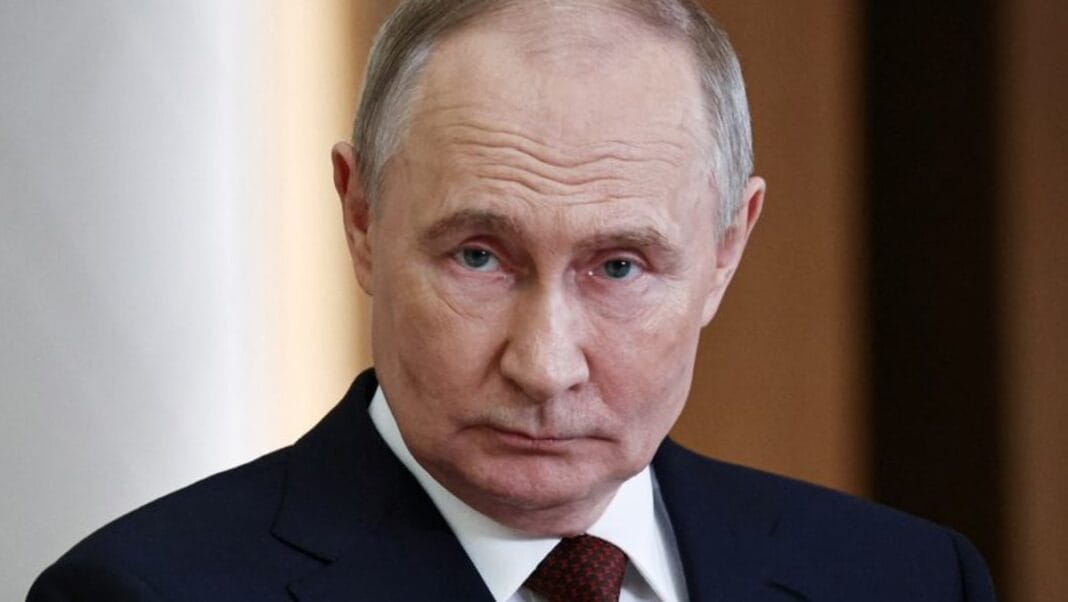Russia’s Oreshnik Hypersonic Missile Threat: A Review
In a recent statement, President Vladimir Putin of Russia hinted at the possibility of using the new Oreshnik hypersonic missile to target “decision-making centres” in Kyiv in response to Ukraine’s firing of Western missiles at Russian territory. This development has escalated tensions between the two nations and raised concerns about the potential consequences of such actions.
Full Review
Russia has not targeted key Ukrainian government buildings during the ongoing conflict, but Putin’s recent remarks suggest a shift in strategy. The Oreshnik, a hypersonic missile, was tested for the first time on a Ukrainian city, claiming to be immune to interception. Western experts remain skeptical of this claim.
Putin stated that Russia would retaliate against Ukraine’s use of Western-made missiles by selecting targets within Ukrainian territory. These targets could include military facilities, defense and industrial sites, or key decision-making centers in Kyiv. The President’s remarks come in response to Ukraine’s deployment of US ATACMS ballistic missiles.
The recent exchange of missile attacks between Russia and Ukraine has escalated tensions further. Ukraine alleges that Russia used cruise missiles with cluster munitions in a massive overnight attack that disrupted power supply to over a million people. In response, Russia claims that Ukraine fired ATACMS into its territory, prompting the launch of the Oreshnik missile at Dnipro.
Since the initial exchange, both countries have continued to launch missiles at each other, with Ukraine allegedly targeting Russia’s Kursk region and using British Storm Shadow cruise missiles. The conflict has intensified following agreements between the US, Britain, and Ukraine allowing the latter to strike deep inside Russian territory with advanced weaponry.
Conclusion
The escalating conflict between Russia and Ukraine, marked by the use of advanced hypersonic and ballistic missiles, poses a significant threat to regional stability. The ongoing exchange of attacks raises concerns about the potential for further escalation and the impact on civilian populations in the affected areas.
FAQs
1. What is the significance of the Oreshnik hypersonic missile?
The Oreshnik hypersonic missile is a new weapon developed by Russia, claimed to be capable of evading interception. Its recent use in attacks against Ukrainian targets has raised concerns about its destructive potential.
2. How has Ukraine responded to Russia’s missile attacks?
Ukraine has accused Russia of targeting its territory with advanced missiles, leading to power outages and significant damage. In response, Ukraine has also launched missiles at Russian regions.
3. What role do Western-made missiles play in the conflict?
The conflict between Russia and Ukraine has seen the deployment of Western-made missiles by both parties, further complicating the situation and raising concerns about the involvement of international powers.
4. How have international experts reacted to the use of hypersonic missiles in the conflict?
International experts have expressed skepticism about the capabilities of hypersonic missiles like the Oreshnik and raised concerns about the potential for widespread destruction in the event of further escalations.
5. What agreements have been made between the US, Britain, and Ukraine regarding missile strikes?
The US and Britain have agreed to support Ukraine in striking deep inside Russian territory with advanced weaponry, marking a significant development in the conflict and potentially leading to further escalations.
6. How has the conflict impacted civilian populations in Ukraine and Russia?
The ongoing conflict has disrupted power supplies, caused damage to infrastructure, and raised fears of civilian casualties in both Ukraine and Russia, highlighting the devastating consequences of military escalation.
7. What measures are being taken to address the escalating tensions between Russia and Ukraine?
Diplomatic efforts are underway to de-escalate tensions between Russia and Ukraine, with international organizations and leaders calling for dialogue and negotiations to prevent further violence and loss of life.
8. What is the strategic significance of targeting decision-making centers in Kyiv?
Targeting decision-making centers in Kyiv could have far-reaching implications for the Ukrainian government and its ability to function effectively, potentially destabilizing the region further and prolonging the conflict.
9. How has the use of advanced missiles affected the geopolitical landscape in Eastern Europe?
The use of advanced missiles in the conflict between Russia and Ukraine has reshaped the geopolitical landscape in Eastern Europe, drawing international attention and raising concerns about the potential for wider regional instability.
10. What are the potential long-term consequences of the ongoing conflict between Russia and Ukraine?
The ongoing conflict between Russia and Ukraine has the potential to escalate into a full-scale war, with devastating consequences for both countries and the broader region. Efforts to find a peaceful resolution are crucial to preventing further bloodshed and destruction.

